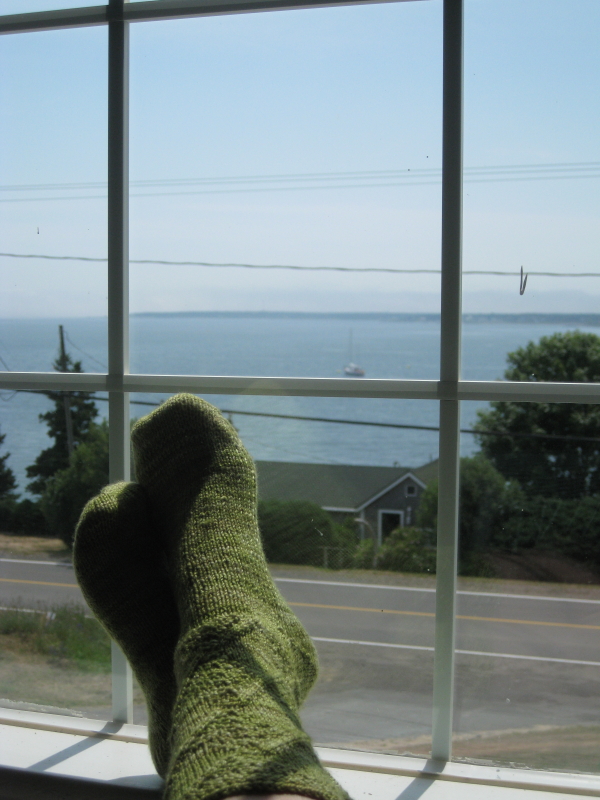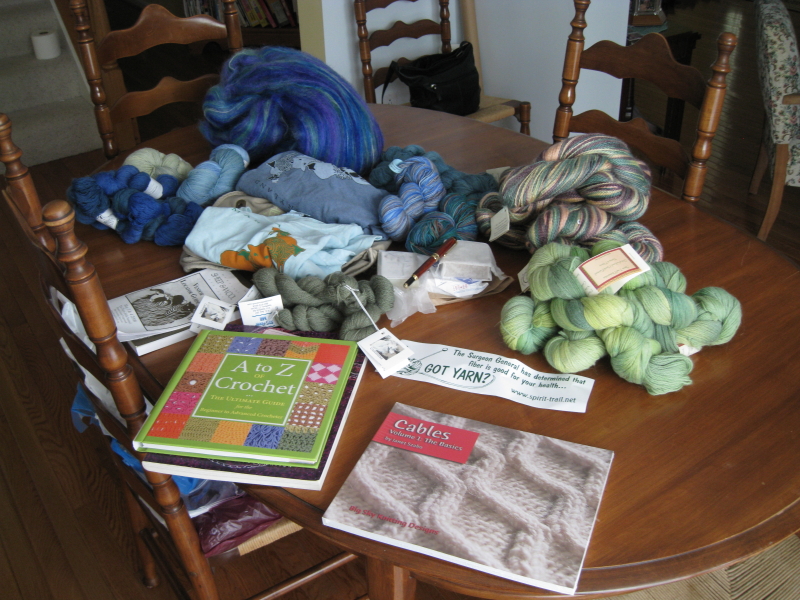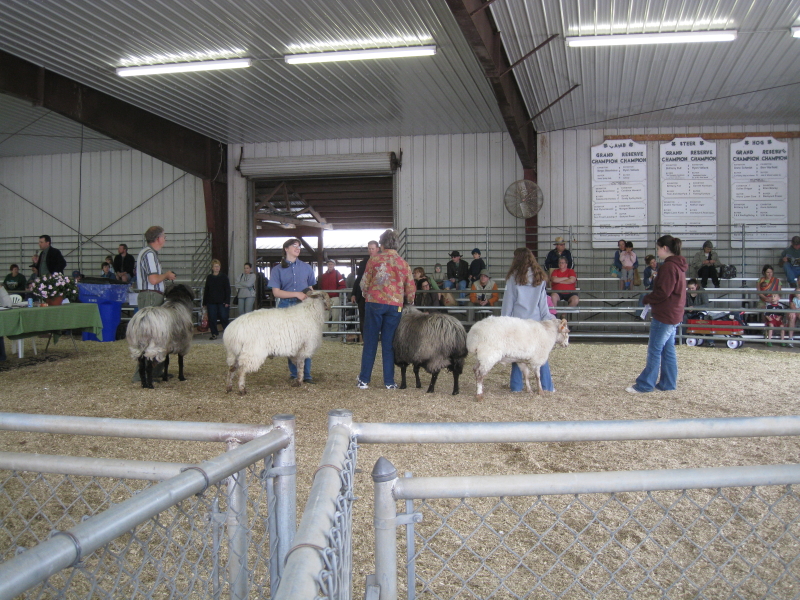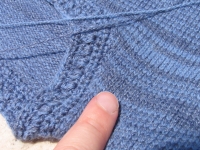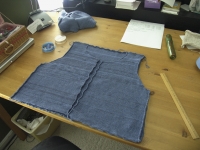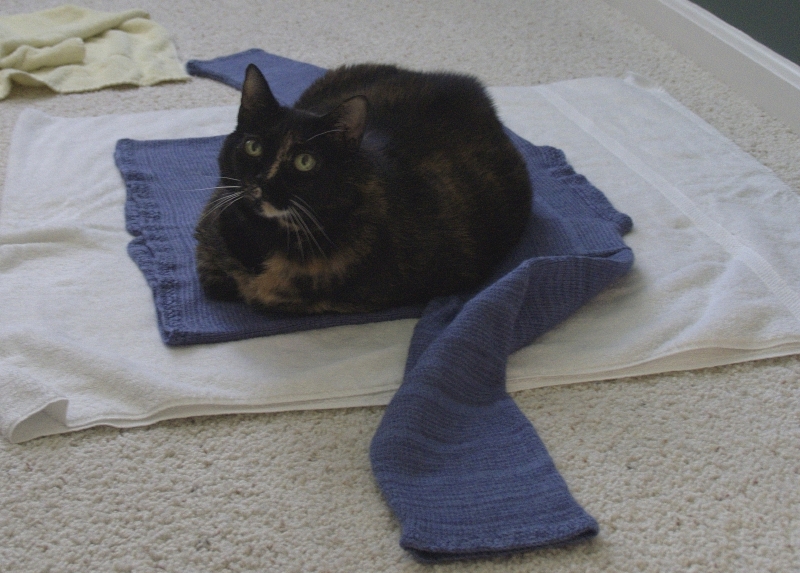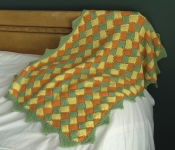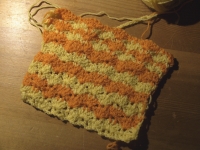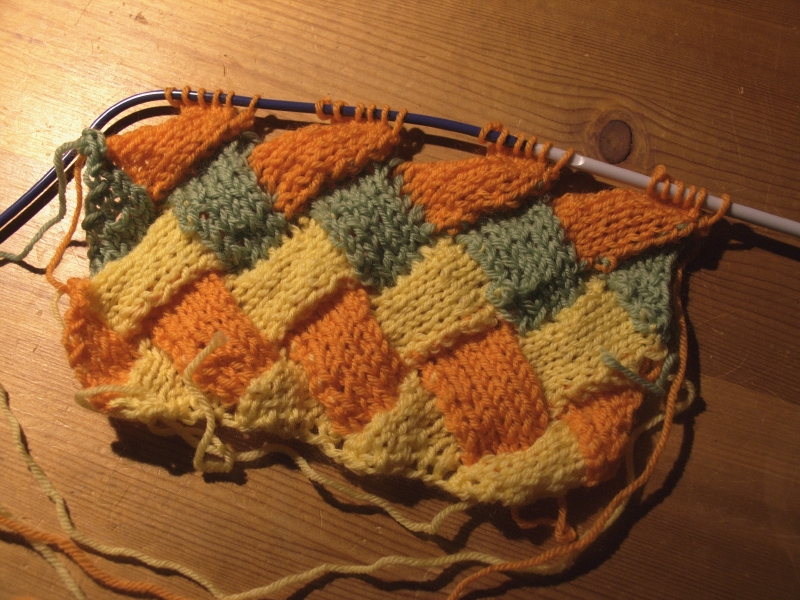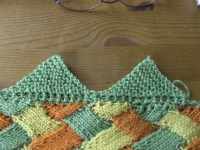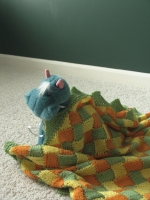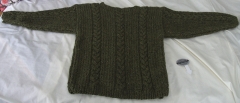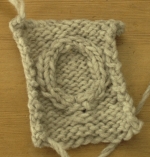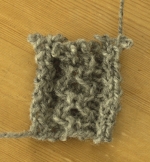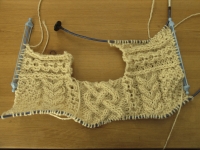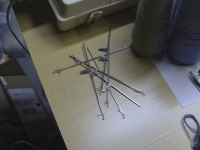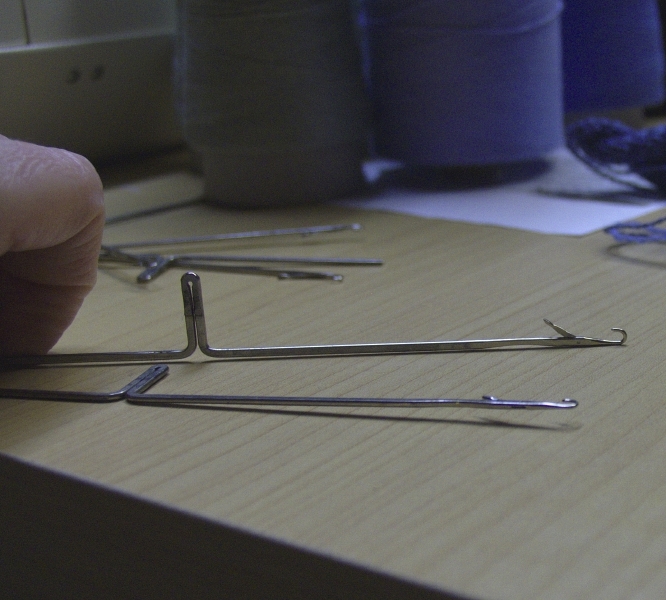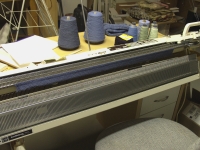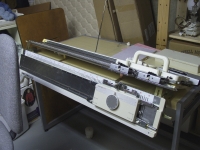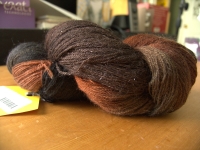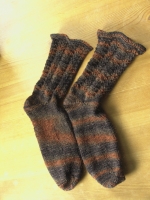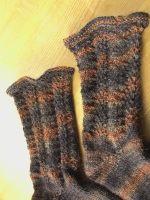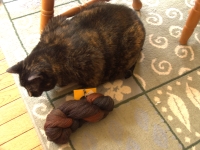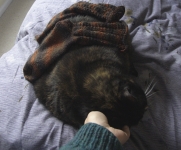I guess there were sheep. There was definitely wool 🙂 And some
other interesting fibres, too.
If you want to understand more about what the Maryland Sheep and Wool Festival
is like, have a look at these pictures
to get a sense of what happens when an estimated 70,000 people (and
some number of sheep, alpaca, angora rabbits…) descend on the Howard
County Fairgrounds for each of 2 days of the annual festival.
For myself, I thoroughly enjoyed a 2-day pre-festival workshop on Aran
Sweater Design, lead by Janet Szabo. There’s something to
be said for spending 2 days with fibre-fiends of a similar level and
interest, focusing on fibre and design. On day 1, sensing that we
were all a little twitchy after 3 hours of data about cables and ropes,
Janet lead us through the ultimate infinite cable — the circle:
It’s magic! (It’s in Janet’s
book, and also in Barbara Walker’s Charted book). On Day
2, there was a certain amount of swatching, and a dive into a
sample project sweater:
We arrived at the fairgrounds around 11am on Saturday — a little late,
by most standards. But, there was still room in the fields for a
few more cars, so we got to enjoy a few hours of wandering through the
throngs of fibre and sheep enthusiasts. Truly, it was
overwhelming. In the end, I focused (if “focus” was possible!) on
stuff from small-scale outfits that I’m just not likely to encounter in
the fibre anywhere else. And, yes, a touch is worth a thousand
words when it comes to yarn!
In there, there’s a crochet (!) kit from Shelridge Farm, some wool/bamboo
sock yarn and some silk/merino from Ellen’s 1/2 Pint Farm,
as well as some laceweight silk and some silk/wool blend from Spirit Trail. Oooh, and
some Koigu KPPPM leapt into my hands, as well.
Oh, and there might have been T-Shirts, books, and a few other
oddments, too 😉
So, apart from enough yarn for 2 sweaters, a top, 3 pairs of socks and
a shawl, what did I get out of the experience?
Completely overwhelmed. And I realized that yes, possibly, there
is a point at which one does not want any more yarn (this may be a
passing condition 😉 ). One of the things that really
struck me was the quantity of yarns in a multitude of colourways.
That is, unlike a typical LYS setup, each booth at the fair was pretty
focused, and it stocked several skeins of any given
colourway. This is a *major* win, as far as I’m
concerned.
It was pretty neat to be wandering around that many people with similar
(and yet, clearly, wildly divergent) interests. I managed to
resist the lure of all the spinning paraphernalia, though I am told I
would be a better knitter if I did spinning as well. With 2
knitting machines craving attention in the basement, I really can’t say
I have time for spinning. No, not even with a drop spindle!
Though, this resistance, too, might be a passing condition.
To round out the weekend, I just about finished up a sweater project
I’ve been working on for some time. (Pictures, soon!). I
have a few more things to clear off the decks and then I’ll let myself
dive into some of these new finds…
